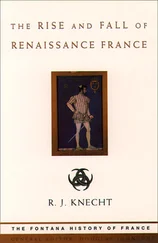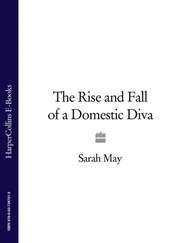The reasons given against an imperial retreat from that theatre would not have convinced those complaining of the waste of resources, but they have a certain plausibility. In the first place, if Spain no longer possessed Flanders, it would fall either to France or to the United Provinces, thereby enhancing the power and prestige of one of those inveterate Habsburg enemies; the very idea was repellent to the directors of Spanish policy, to whom ‘reputation’ mattered more than anything else. Secondly, there was the argument advanced by Philip IV and his advisers that a confrontation in that region at least took hostile forces away from more sensitive places: ‘Although the war which we have fought in the Netherlands has exhausted our treasury and forced us into the debts that we have incurred, it has also diverted our enemies in those parts so that, had we not done so, it is certain that we would have had war in Spain or somewhere nearer.’ 41 Finally, there was the ‘domino theory’ – if the Netherlands were lost, so also would be the Habsburg cause in Germany, smaller possessions like Franche-Comté, perhaps even Italy. These were, of course, hypothetical arguments; but what is interesting is that the statesmen in Madrid, and their army commanders in Brussels, perceived an interconnected strategical whole, which would be shattered if any one of the parts fell:
The first and greatest dangers [so the reasoning went in the critical year of 1635] are those that threaten Lombardy, the Netherlands and Germany. A defeat in any of these three is fatal for this Monarchy, so much so that if the defeat in those parts is a great one, the rest of the monarchy will collapse; for Germany will be followed by Italy and the Netherlands, and the Netherlands will be followed by America; and Lombardy will be followed by Naples and Sicily, without the possibility of being able to defend either. 42
In accepting this logic, the Spanish crown had committed itself to a widespread war of attrition which would last until victory was secured, or a compromise peace was effected, or the entire system was exhausted.
Perhaps it is sufficient to show that the sheer costs of continuous war and the determination not to abandon any of the four major fronts were bound to undermine Spanish-imperial ambitions in any case. Yet the evidence suggests that there was a third, related cause: namely, that the Spanish government in particular failed to mobilize available resources in the most efficient way and, by acts of economic folly, helped to erode its own power.
Although foreigners frequently regarded the empire of Charles V or that of Philip II as monolithic and disciplined, it was in fact a congeries of territories, each of which possessed its own privileges and was proud of its own distinctiveness. 43 There was no central administration (let alone legislature or judiciary), and the only real connecting link was the monarch himself. The absence of such institutions which might have encouraged a sense of unity, and the fact that the ruler might never visit the country, made it difficult for the king to raise funds in one part of his dominions in order to fight in another. The taxpayers of Sicily and Naples would willingly pay for the construction of a fleet to resist the Turks, but they complained bitterly at the idea of financing the Spanish struggle in the Netherlands; the Portuguese saw the sense of supporting the defence of the New World, but had no enthusiasm for German wars. This intense localism had contributed to, and was reflected by, jealously held fiscal rights. In Sicily, for example, the estates resisted early Habsburg efforts to increase taxation and had risen against the Spanish viceroy in 1516 and 1517; being poor, anarchical, and possessing a parliament, Sicily was highly unlikely to provide much for the general defence of Habsburg interests. 44 In the kingdom of Naples and in the newer acquisition of Milan, there were fewer legislative obstacles to Spanish administrators under pressure from Madrid to find fresh funds. Both therefore could provide considerable financial aid during Charles V’s reign; but in practice the struggle to retain Milan, and the wars against the Turks, meant that this flow was usually reversed. To hold its Mediterranean ‘bulwark’, Spain had to send millions of ducats to Italy, to add to those raised there. During the Thirty Years War the pattern was reversed again, and Italian taxes helped to pay for the wars in Germany and the Netherlands; but, taking this period 1519–1659 as a whole, it is hard to believe that the Habsburg possessions in Italy contributed substantially more – if at all – to the common fund than they themselves took out for their own defence. 45
The Netherlands became, of course, an even greater drain upon general imperial revenues. In the early part of Charles V’s reign, the States General provided a growing amount of taxes, although always haggling over the amount and insisting upon recognition of their privileges. By the emperor’s later years, the anger at the frequent extraordinary grants which were demanded for wars in Italy and Germany had fused with religious discontents and commercial difficulties to produce a widespread feeling against Spanish rule. By 1565 the state debt of the Low Countries reached 10 million florins, and debt payments plus the costs of normal administration exceeded revenues, so that the deficit had to be made up by Spain. 46 When, after a further decade of mishandling from Madrid, these local resentments burst into open revolt, the Netherlands became a colossal drain upon imperial resources, with the 65,000 or more troops of the Army of Flanders consuming one-quarter of the total outgoings of the Spanish government for decade after decade.
But the most disastrous failure to mobilize resources lay in Spain itself, where the crown’s fiscal rights were in fact very limited. The three realms of the crown of Aragon (that is, Aragon, Catalonia, and Valencia) had their own laws and tax systems, which gave them a quite remarkable autonomy. In effect, the only guaranteed revenue for the monarch came from royal properties; additional grants were made rarely and grudgingly. When, for example, a desperate ruler like Philip IV sought in 1640 to make Catalonia pay for the troops sent there to defend the Spanish frontier, all this did was to provoke a lengthy and famous revolt. Portugal, although taken over from 1580 until its own 1640 rebellion, was completely autonomous in fiscal matters and contributed no regular funds to the general Habsburg cause. This left Castile as the real ‘milch cow’ in the Spanish taxation system, although even here the Basque provinces were immune. The landed gentry, strongly represented in the Castilian Cortes, were usually willing to vote taxes from which they were exempt. Furthermore, taxes such as the alcabala (a 10 per cent sales tax) and the customs duties, which were the ordinary revenues, together with the servicios (grants by the Cortes), millones (a tax on foodstuffs, also granted by the Cortes), and the various church allocations, which were the main extraordinary revenues, all tended to hit at trade, the exchange of goods, and the poor, thus spreading impoverishment and discontent, and contributing to depopulation (by emigration). 47
Until the flow of American silver brought massive additional revenues to the Spanish crown (roughly from the 1560s to the late 1630s), the Habsburg war effort principally rested upon the backs of Castilian peasants and merchants; and even at its height, the royal income from sources in the New World was only about one-quarter to one-third of that derived from Castile and its six million inhabitants. Unless and until the tax burdens could be shared more equitably within that kingdom and indeed across the entirety of the Habsburg territories, this was virtually bound to be too small a base on which to sustain the staggering military expenditures of the age.
Читать дальше












